A solid sphere of radius R and density ρ is attached to one end of a mass-less spring of force constant k. The other end of the spring is connected to another solid sphere of radius R and density 3ρ. The complete arrangement is placed in a liquid of density 2ρ and is allowed to reach equilibrium. The correct statements(s) is (are)
the net elongation of the spring is 4πR3ρg3k
the net elongation of the spring is 8πR3ρg3k
the light sphere is partially submerged
the light sphere is completely submerged
The correct Answer is:A, D
To solve the problem, we need to analyze the forces acting on the two solid spheres attached by a spring and submerged in a liquid. We will follow these steps:
Step 1: Calculate the Weight of Each Sphere
The weight of an object can be calculated using the formula:
W=m⋅g
where m is the mass and g is the acceleration due to gravity.
- For the first sphere (density ρ):
m1=density×volume=ρ×(43πR3)
W1=m1⋅g=ρ⋅(43πR3)⋅g
- For the second sphere (density 3ρ):
m2=3ρ×(43πR3)
W2=m2⋅g=3ρ⋅(43πR3)⋅g
- Total weight W:
W=W1+W2=(ρ⋅43πR3⋅g)+(3ρ⋅43πR3⋅g)
W=43πR3g(1+3ρ)=43πR3g(4ρ)
Step 2: Calculate the Buoyant Force
The buoyant force Fb acting on the system can be calculated using Archimedes' principle:
Fb=density of liquid×volume submerged×g
Given that the density of the liquid is 2ρ:
Fb=2ρ⋅Vsubmerged⋅g
where Vsubmerged is the total volume of the two spheres:
Vsubmerged=2⋅(43πR3)=83πR3
Thus,
Fb=2ρ⋅(83πR3)⋅g=163πR3ρg
Step 3: Set Up the Equilibrium Condition
At equilibrium, the total weight of the system is equal to the buoyant force:
W=Fb
Substituting the expressions we derived:
43πR3(4ρ)g=163πR3ρg
Both sides are equal, confirming that our calculations are consistent.
Step 4: Calculate the Elongation of the Spring
The elongation x of the spring can be determined by equating the upward buoyant force and the downward force due to the weight of the spheres plus the spring force:
Fb=W+kx
Substituting the values:
163πR3ρg=163πR3ρg+kx
Solving for kx:
kx=0⟹x=4πR3ρg3k
Conclusion
The elongation of the spring is given by:
x=4πR3ρg3k
Thus, the correct statements based on the analysis are that both spheres are completely submerged in the liquid.
The weight of an object can be calculated using the formula:
W=m⋅g
where m is the mass and g is the acceleration due to gravity.
m1=density×volume=ρ×(43πR3)
W1=m1⋅g=ρ⋅(43πR3)⋅g
m2=3ρ×(43πR3)
W2=m2⋅g=3ρ⋅(43πR3)⋅g
W=W1+W2=(ρ⋅43πR3⋅g)+(3ρ⋅43πR3⋅g)
W=43πR3g(1+3ρ)=43πR3g(4ρ)
The buoyant force Fb acting on the system can be calculated using Archimedes' principle:
Fb=density of liquid×volume submerged×g
Fb=2ρ⋅Vsubmerged⋅g
where Vsubmerged is the total volume of the two spheres:
Vsubmerged=2⋅(43πR3)=83πR3
Thus,
Fb=2ρ⋅(83πR3)⋅g=163πR3ρg
At equilibrium, the total weight of the system is equal to the buoyant force:
W=Fb
Substituting the expressions we derived:
43πR3(4ρ)g=163πR3ρg
Both sides are equal, confirming that our calculations are consistent.
The elongation x of the spring can be determined by equating the upward buoyant force and the downward force due to the weight of the spheres plus the spring force:
Fb=W+kx
Substituting the values:
163πR3ρg=163πR3ρg+kx
Solving for kx:
kx=0⟹x=4πR3ρg3k
The elongation of the spring is given by:
x=4πR3ρg3k
Thus, the correct statements based on the analysis are that both spheres are completely submerged in the liquid.
Topper's Solved these Questions
- FLUID MECHANICSBOOK - CENGAGE PHYSICS ENGLISHCHAPTER - FLUID MECHANICSEXERCISE - LC_TYPE
9 Videos
- FLUID MECHANICSBOOK - CENGAGE PHYSICS ENGLISHCHAPTER - FLUID MECHANICSEXERCISE - INTEGER_TYPE
1 Videos
- FLUID MECHANICSBOOK - CENGAGE PHYSICS ENGLISHCHAPTER - FLUID MECHANICSEXERCISE - AR_TYPE
1 Videos
- DIMENSIONS & MEASUREMENTBOOK - CENGAGE PHYSICS ENGLISHCHAPTER - DIMENSIONS & MEASUREMENTEXERCISE - Integer
2 Videos
- GRAVITATIONBOOK - CENGAGE PHYSICS ENGLISHCHAPTER - GRAVITATIONEXERCISE - INTEGER_TYPE
1 Videos
Similar Questions
A bead of mass m is attached to one end of a spring of natural length R and spring constant K=(√3+1)mgR. The other end of the spring is fixed at a point A on a smooth vertical ring of radius R as shown in fig. The normal reaction at B just after it is released to move is
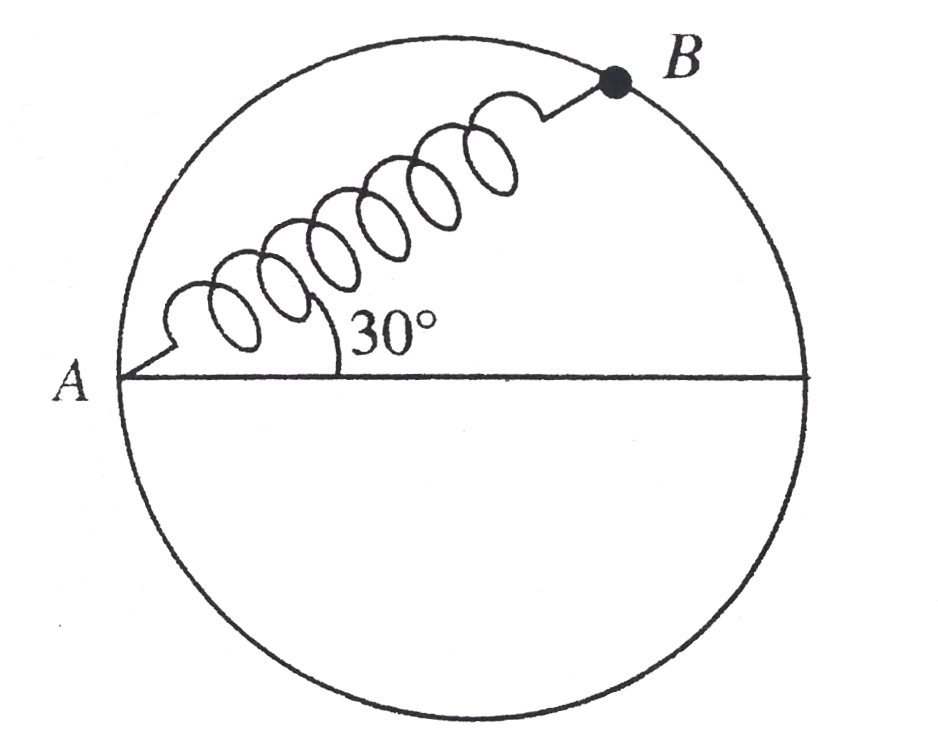
View SolutionWhat is the moment of inertia of a solid sphere of density ρ and radius R about its diameter ?
View SolutionA block of density 2000kg/m3 and mass 10kg is suspended by a spring stiffness 100N/m. The other end of the spring is attached to a fixed support. The block is completely submerged in a liquid of density 1000kg/m3. If the block is in equilibrium position.
View SolutionA solid sphere having radius R and uniform charge density ρ has a cavity of radius R2 as shown in figure.Find the value of ∣∣∣EAEB∣∣∣
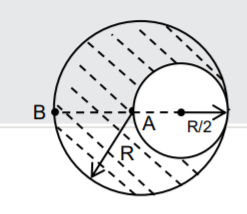
View SolutionIn the figure shown, the heavy cylinder (radius R) reasting on a smooth surface separates two liquids of densities 2ρ and 3ρ. The height h for the equilibrium of cylinder must be
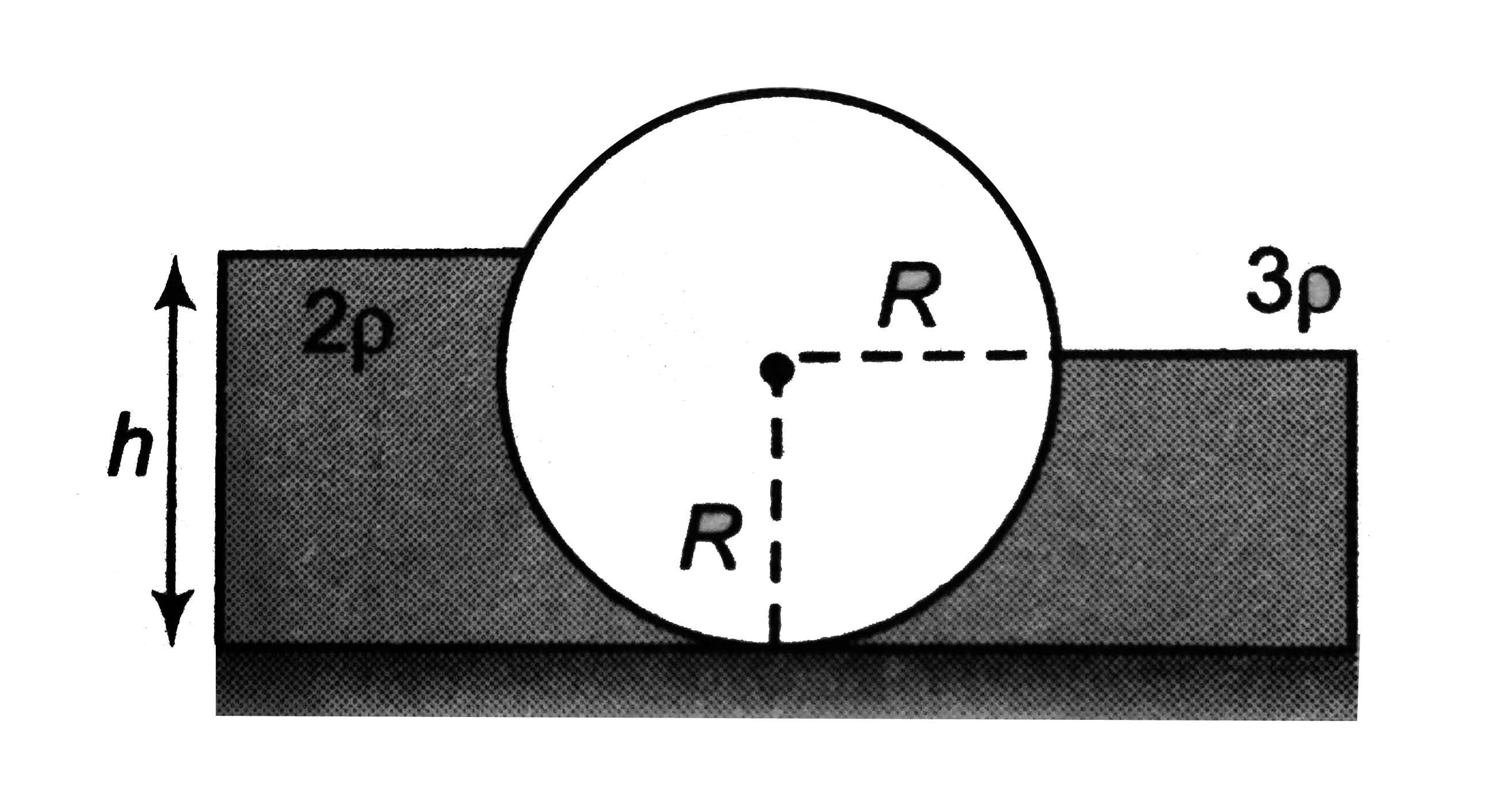
View SolutionA Solid sphere of density ρ=ρ0(1−r2R2),0<r≤R just floats in a liquid then density of liquid is– (r is distance from centre of sphere)
View SolutionWhat is the moment of inertia of solid sphere of density ρ and radius R about its diameter ?
View SolutionPassage XIV) A uniform cylindrical block of mass 2M and cross-sectional area A remains partially submerged in a non viscous liquid of density ρ, density of the material of the cylinder is 3ρ. The cylinder is connected to lower end of the tank by means of a light spring of spring constant K. The other end of the cylinder is connected to anotehr block of mass M by means of a light inextensible sting as shown in the figure. The pulleys shown are massless and frictionless and assume that the cross-section of the cylinder is very small in comparison to that of the tank. Under equilibrium conditions, half of the cylinder is submerged. [given that cylinder always remains partially immersed)
Under equilibrium conditions
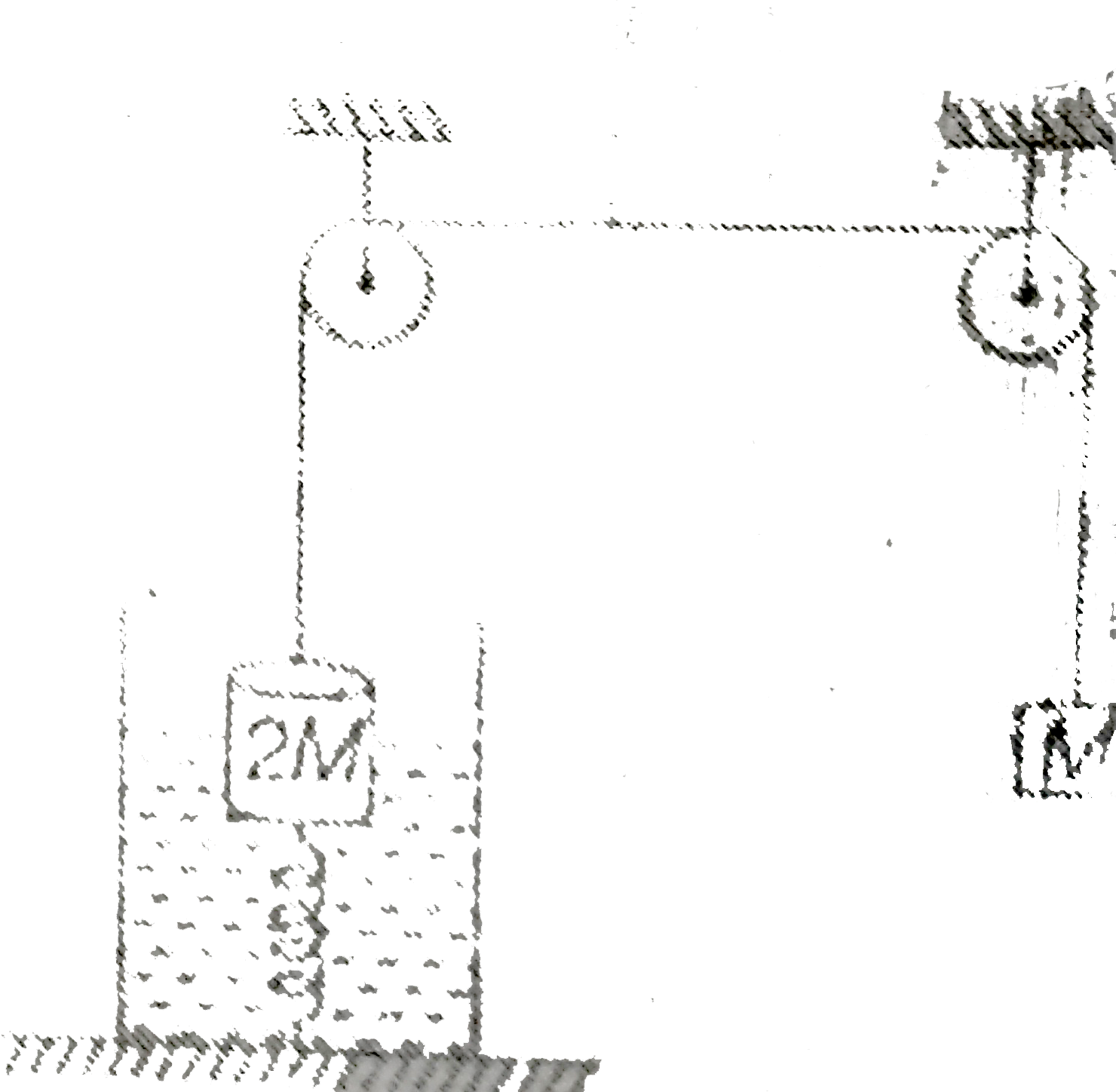
View SolutionA bead of mass m can slide without friction on a fixed circular horizontal ring of radius 3R having a centre at the point C. The bead is attached to one of the ends of spring of spring constant k. Natural length of spring is R and the other end of the spring is R and the other end of the spring is fixed at point O as shown in the figure. If the bead is released from position A, then the kinetic energy of the bead when it reaches point B is
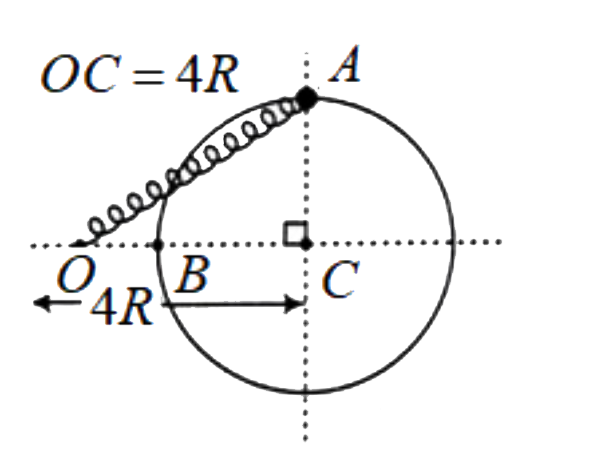
View SolutionConsider a solid sphere oF radius R and mass density ρ(r)=ρ0(1−r2R2) 0<r≤R. The minimum density oF a liquid in which it will Float is:
View Solution
